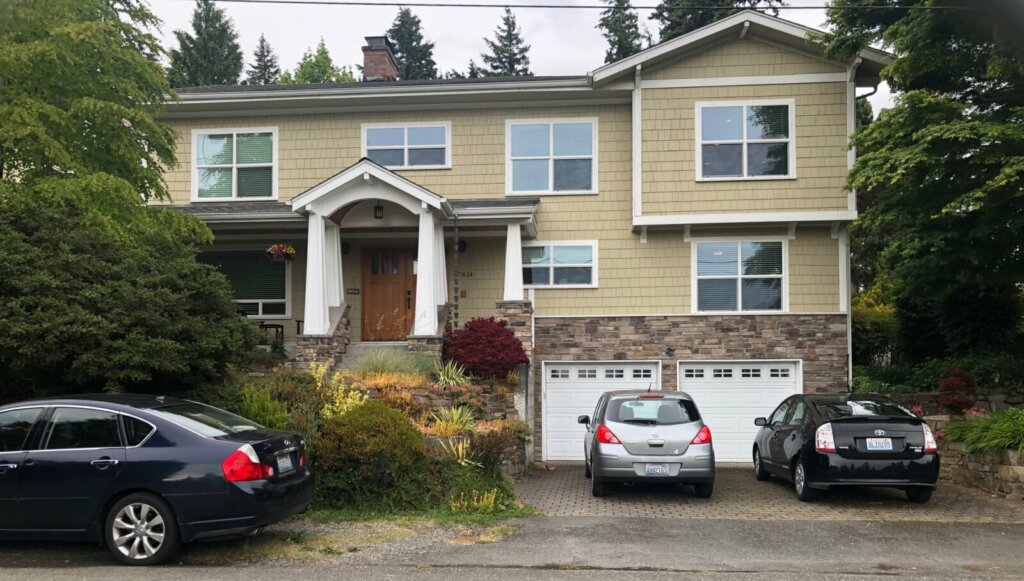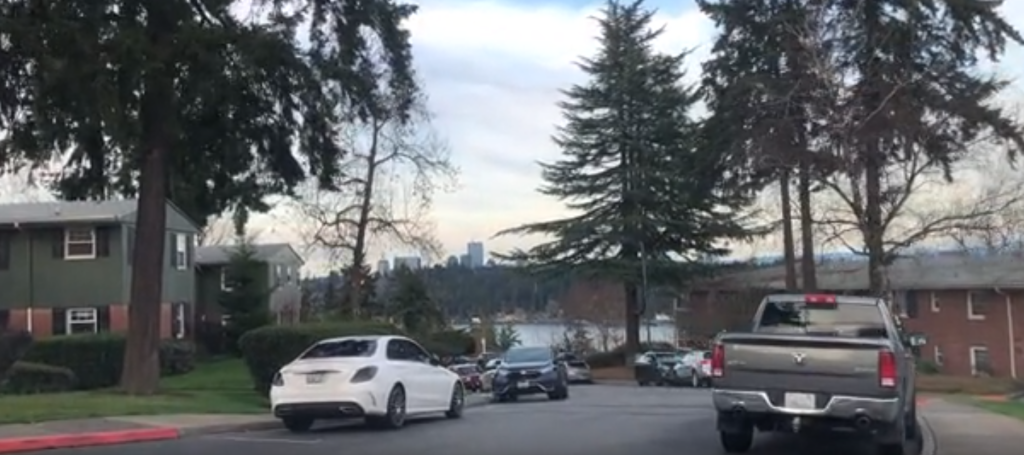Imagine getting a call from the tenant in your rental property one day, and the tenant wants to sub-lease his home in Seattle, WA to some college students over the summer, while he is gone traveling. Yikes! What would you do? Is that in the rental agreement? Who’s going to make the rent payments?
While there could be many reasons a tenant would want to sub-lease your house or apartment unit in the Seattle, WA real estate market… not all reasons are created equal. Should you say “yes” and give him the right to sublease, or is this risky? Do you want a new subtenant living in your property who you didn’t select?
Find Out What To Do If Your Tenants Ask To Sub-Lease in Seattle, WA.
Now, whether or not this is a good idea may be highly dependent on the type of unit you have, the type of tenant you have, and the reasons for the request. Many landlords actually do NOT allow sub-leasing and it is specifically banned in their lease. This is generally because the primary tenant may not do a good job screening the subtenant, and they could then wreak havoc on your property. Even if the new tenant signs a lease agreement, things can get hairy if payments don’t come in and you have to evict. Think about “squatters rights” and you can see how this could quickly become a tangled problem an landlord may want to avoid.
Check out my thoughts on what you should do if you have a tenant who wants to sublet.
What Is Subletting (or Subleasing) A Rental Unit? What Does This Mean?
Subletting means you have one tenant with a lease on the property. He lets other tenants move in and they pay him, while he is still responsible for paying you.
Subletting Tenants May Include:
- Roommates and Girlfriends who are not on the lease with you, but who live in the house with the original tenant and pay rent directly to him.
- Often college students will rent a house for 1 year, and leave it vacant when they go home over the summer. They may re-coup some of this cost by subletting their unit to people in town for summer school, summer jobs, internships, etc.
- Air BnB or Short and Mid-Term Travelers are another source of potential subletting tenants. In fact, some people make a business out of rent arbitrage where they rent out a unit at a monthly or annual lease rate (cheaper) and then sublet the unit to travelers via Air BnB or Traveling Nurses websites and charge a higher per-diem rate. The original tenant may never occupy the property, but they would be responsible for furnishing it and managing it.
- Friend or Family members or Random Strangers. Sometimes tenants find out that living on their own is not what it’s cracked up to be. Maybe they can’t afford living on their own and decide to “give up their lease.” Instead of just paying to break the lease and walking away, they may let a friend or family member, or even just a casual acquaintance move into their unit and unofficially take over the lease. This is more common in a tight rental market where the subtenant may have a hard time finding a lease on their own unit. It may also be common if the friend or family member has bad credit and cannot qualify to rent a home on their own.

If you think your tenant may be inclined to embark on a subletting endeavor, you need to be very clear on what is and is not allowable. It’s critical to have a solid sublease agreement so everyone’s on the same page. I would be most wary about this with an unreliable tenant. I would be most confident if I were approached by an investor or property management business which had a good track record of success in this regard.
It’s risky to have a tenant in your property you haven’t screened – what if they damage the property, don’t pay, or create other problems. Be careful and consult with a real estate attorney if need help understanding the landlord, tenant and prospective tenant relationship.
A Cautionary Tale: Get A Written Sublease Agreement and Keep An Eye On The Subtenant!
A potential client told me this horror story that had happened at her tri-plex in South Seattle. Somebody leased the whole building – offering the landlord hassle-free income and no management worries. It sounded like a good deal until the subletting company started moving in what seemed like illegal immigrants. I turned out the company was a cover for part of a human trafficking organization and it was a nightmare to get the police involved and get everybody out of the building. Subletting an apartment just gives you less control overall.
A Success Story Of Doing a “Master Lease” With A Real Estate Investor
I also know of a situation where a little old lady owned a 24-unit apartment building that she was getting too old to manage, but she didn’t want to sell it, because she would incur a lot of capital gains taxes, and she would lose her monthly income.
She worked with a real estate investor who did a master lease for the whole building and promised to pay her the same amount she was currently making on the property as long as she lived, and then he had the option to buy the property when she died (which he did) so that her heirs wouldn’t have to manage the property and could have a quick, safe sale at the end of the term.
This worked out great for them both. He was a wonderful property manager and improved the rents and the tenants in the building, and she could collect checks and enjoy her retirement without an ongoing need to manage the property.
This is a great alternative to selling the property right away. If you’d like to have assistance with this type of situation, please let us know.

Understand The Legalities Of Subleasing A Rental Unit, Including Payment, Deposits, Damage and Eviction
As long as you have a valid lease with your current tenant in place, he should continue to be responsible for your home, including keeping a security deposit on file and being financially liable for any damage to the property. However, if the subtenant doesn’t pay rent the landlord must evict the regular tenant and make sure the subtenant vacates the house which could be especially challenging given Seattle’s pro-tenant legal landscape.
Before you give the green light for your tenant to sublease the place, you must double-check that you’re following all the local rules and regulations. You definitely don’t want to end up in hot water with fines for letting your tenant rent it out to someone else. Once you’ve done your homework on that, you can move forward with letting them sublet if you want to. You don’t have to let your tenant sublet the unit and in most cases, especially in a strong rental market, I would not do so.
It would be better to have your current tenant break his lease (and pay the associated lease-break fees if applicable) and then screen a new tenant before allowing him to move in to one of your rental properties. Once you allow subletting, you have released a significant amount of control over the unit.
Your tenant needs your okay to legally sublet the property. But keep in mind, some cities allow subleasing under certain conditions, even if the lease says no. So, as the landlord, it very important to know the specific rules in your area.
According to Seattle.gov’s Renter’s Handbook, there are no specific sections regarding the legalities of whether tenant is allowed to sublet a unit. However, the handbook does warn against the complications that can arise for tenants when they bring roommates into the unit.
For example, the handbook says tenants must notify the landlord if roommates are joining him in the property and the landlord can screen these new roommates and charge a screening fee.
Potential Roommates Tenants Can Add to Their Lease With The Landlord:
According to Seattle Renter’s Handbook, here are some suggested people your existing tenant might want to add to his lease, or work out a sublease agreement with:
- Immediate family
- One additional non-family roommate
- Immediate family of the additional roommate
- Any other roommates that the landlord agrees to
- Not to exceed legal occupancy standards
However, this is not without risk to the current tenant. The handbook also warns against the potential complications that come if the landlord needs to evict the tenants roommate, and how action against the subtenant could jeopardize the original tenants’ occupancy rights as well.
Tenant And Landlord Are Both Responsible To Have Proper Contracts In Place
When you’re letting your tenant sublease the place, it’s a good idea to encourage them to make sure all the paperwork is done right and legally. Even though Washington State Law recognizes the validity of verbal leases, they can be hard to enforce and lead to fights and even lawsuits when things don’t go to plan.
The contract should be set up to protect you and your tenant in case anything goes sideways. It should spell out if the tenant is subletting a room or the whole unit and what kinds of access the new tenant gets. It should clarify who is responsible for the rent, and what happens if the subletting tenant misses a payment. Ideally the subleasee should have the consent of the landlord, otherwise, he may find that he’s facing an eviction if the master tenant is not doing what he should.
I have seen situations where the master tenant was collecting rent, but not paying the underlying rent to the landlord, so the landlord was preparing to evict the tenant. If the new tenant moves out peacefully that’s fine, but you can see how quickly problems can multiply.



Seattle, WA is full of rental properties being handled in a variety of different leases and other agreements.
It’s best to get all the details sorted out beforehand and it’s good that your primary tenant is asking you if he can pursue a sublease to help him make payments rather than renting the property without your permission.
Make sure they figure out who’s going to live in the property and when… what happens if plans change, and how the tenant and subtenant are going to work out any problems that come up between them. They need to confirm who the subletter will be sending the rent check to, how are the utilities will be taken care of, and what the subtenants responsibilites are when the primary tenant is away. There are a bunch of things that really should be in writing before someone new moves in.
Where Does Responsibility Lie: With The Landlord, Tenant Or Subtenant?
The way subletting typically works is that the Landlord and Original tenant have a written agreement, and the landlord and subtenant have a written agreement. If there is a problem with the subtenant, it is the original tenant’s responsibility fix it. The original tenant is “vouching” for the subtenant, and putting the weight of his credit, debt responsibility, and damage deposit behind that subtenant.
If the subtenant goes crazy and damages the house, the original tenant may lose his damage deposit PLUS have additional responsibility to repair or pay for repair of the unit, as determined by the lease and enforced in small claims court. Make sure if your tenant wants to sublet, that he understands the risk to himself and his security deposit based on the behaviors of the new tenant.
If the tenant wants to sublet, he is putting a lot of trust into that subleasee, because the original tenant is still on the hook to the landlord for rent, property maintenance – like mowing and utilities – and everything else specified in the lease.
It’s super important to make it clear that if the person subletting the house doesn’t pay rent, your original tenant is still responsible. They signed the lease, so they’re the ones who need to handle it. If the rent isn’t paid, if something gets broken, or if the subletter just bails, your original tenant will need to cover the rent and fix any damage according to the lease you have with them.
Marketing & Advertising To Find A New Tenant
If your tenant is trying to rent out the house themselves, it’s probably a good idea to let them know about Fair Housing rules. If they mess up, it could land you in hot water with the law. If you’re okay with them advertising, just double-check what they’re saying to ensure it’s all above board.
Typically, landlords aren’t super nervous about having their properties marketed, since they do this all the time, and they don’t live there, but you may need to check with your photographer if you had special photos taken of your property, to confirm whether the tenant has the license to use these.
In addition, if the tenant is creating a new sublease agreement for his subtenant (which he should) make sure that anything the agreement prohibits is legal, and the lease is enforceable and humane according to the city of Seattle’s very strict standards.

Tenant Screening: Find A Tenant Who Can Commit To Being Responsible
If your tenant is planning to sublet his unit to someone that is not known to him personally, he should plan to do a credit and background check on this tenant as well as collecting his own damage deposit. Your tenant may not have any idea how to do this. A simple outsourced service like TurboTenant might make it more feasible for him. You should definitely lay down some clear rules so your tenant doesn’t end up renting to someone who’ll be a pain. The new person needs to be dependable and able to pay their rent on time. It’s a good idea for your tenant to grab a deposit just in case things go sideways with the living situation.
Are they going to handle all the screening, or do you want to get your hands dirty in the process? It’s a good idea to set some clear rules so your tenant doesn’t end up bringing in someone annoying. The new person needs to be reliable and able to pay rent on time. You might want to suggest that your tenant gets a deposit to cover any issues if things go sideways.
Letting your tenant sublet can actually work out pretty well. For example, if you’ve got a solid long-term renter who’s taking a new job for six months, having them sublet is way better than leaving the place empty or arguing over a broken lease. When the right subletters come in, it can be a win-win for everyone. A short-term renter gets a place to stay, your tenant can come back when they’re ready, and you keep getting your rent check every month.Letting your tenant sublet the place can actually be pretty handy.
Imagine you’ve got a solid long-term tenant who’s off to a new job for 6 months. Letting them sublet is way better than having a vacant property or fighting over a broken lease. When the right subletter moves in, it can work out well for everyone. The short-term renter gets a place to live, your tenant can come back when they’re ready, and you keep raking in that rent money every month.
Learn more about how to handle a sub-lease in Seattle! Contact us today! (206) 578-3438
How Can We Help You?
We would love to hear from you! Please fill out this form and we will get in touch with you shortly.
